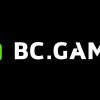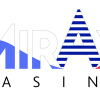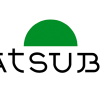On the other hand, Solana, Tron, Bitcoin Cash, Dogecoin, and Shiba Inu are with insignificant gains. However, Chainlink’s native token is the best performer in terms of weekly gains from the top 100 alts with a 15% surge. However, the bulls came out to play late on Monday when they pushed the cryptocurrency to just over $27,400. The altcoins are also untypically stable on a daily scale, but some, such as LINK, have exploded over the past week. The following guide covers these schemes, how they work and the laws and initiatives that have been put in place to combat them. The work of the initiatives discussed earlier has resulted in stronger laws all around the world. The US is known around the world for applying particularly heavy fines against financial institutions that are involved in money laundering. The Bank Secrecy Act (BSA) and anti-money laundering provisions of the Patriot Act represent some of the most influential in the world. Foreign Bank Account Reports: FBARs must be filed by citizens who are keeping more than $10,000 in foreign bank accounts. This investigation would ultimately reveal that the bank was used to launder nearly $300 million.
In the past, countries placed on this list-and businesses headquartered in them-have faced intense financial pressure. For example, proceeds from cash businesses can be gambled, just as the “success” of a cash business that has been infused with placed cash can be used to justify investments or loans that, in fact, come from cash placed offshore. Layering: When the money is laundered through foreign investment, the layering stage takes place when the foreign business “invests” into the legitimate business using money that was placed with them. In all schemes, however, the purpose of the layering stage is to make it difficult for even a skilled accountant to differentiate between money that came from legal transactions and money that came from funds that were placed for laundering. Layering: When the money is laundered through cash businesses, such as car washes and strip clubs, the layering stage takes place when dozens of fake transactions are slipped into the books throughout the day. In this step, it may be deposited in a bank, added to the accounts of an existing business or disguised as a transaction (for example, for products that are never provided).
The business week started somewhat sluggishly as bitcoin kept the previous weekend’s momentum going and had stalled at around $26,500. However, the landscape has been predominantly stagnant, and BTC has failed to move outside of its current price lines of $26,500. As history suggests, BTC’s price performance has been quite dull during the weekend, with little-to-no actual movements. A more serious price drop came on Thursday when BTC slumped to a three-day low of $26,400. Larger criminal organizations are more likely to use this strategy because they already possess a network of compliant members. After an immediate retracement, bitcoin went on the offensive once more on Tuesday, tapping a 20-day peak at just over $27,500. Toncoin has declined by over 2% within the past day, while LINK has jumped by a similar percentage. The past 24 hours have been rather uneventful for the alternative coins as well. In most successful schemes, the launderer will not appear to have any prior contact with the investor who is holding the money. Nations that do not outlaw and pursue money laundering are at risk of becoming international hotspots for laundering schemes. This network was developed to provide support to policy practitioners, lawyers and law enforcement officers who need are working to improve the detection, identification and prosecution of money laundering.
Casinos: There are very few ways that someone can turn a small amount of money into a massive amount of money without attracting attention from law enforcement. The money is converted to casino chips, which are then briefly played and then transferred back into cash. Illicit money can be used to gamble, then placed into stocks, then shuffled around in different currencies and then used to buy financial products like life insurance policies. The money involved in the laundering was deposited into accounts in Mexico by money exchangers and then wired to US accounts where it was withdrawn and then shipped back to Mexico in US cash. The FATF publishes a regularly-updated blacklist of the countries that are believed to be facilitating global money laundering. In addition to encouraging greater cooperation among member nations, the organization serves to place an uncomfortable spotlight on nations that are flaunting international standards. The organization is a result of a combined effort by the G7 (Canada, France, Germany, Italy, Japan, UK and US) to improve and standardize anti money-laundering laws.





